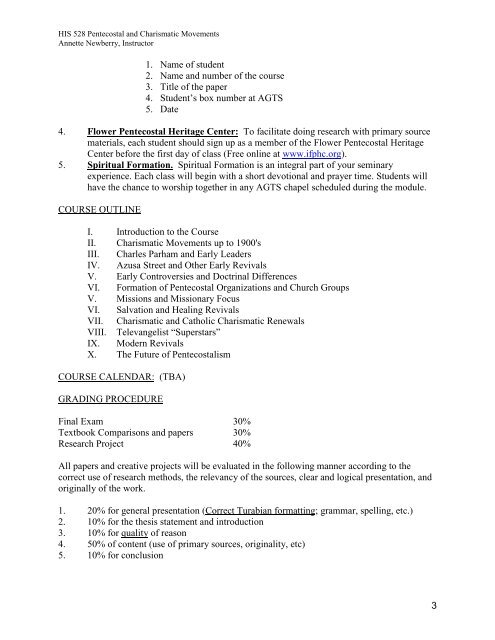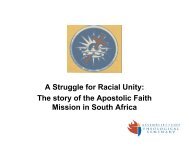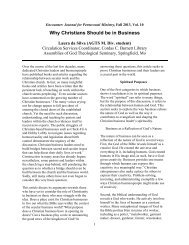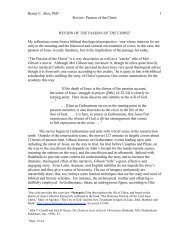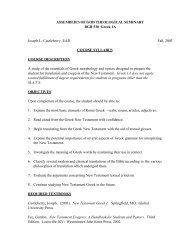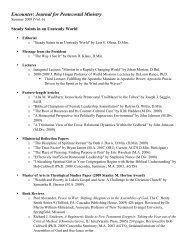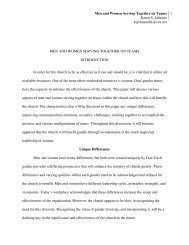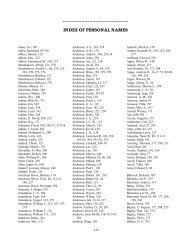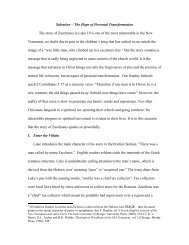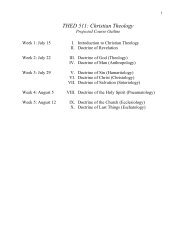Syllabus - Assemblies of God Theological Seminary
Syllabus - Assemblies of God Theological Seminary
Syllabus - Assemblies of God Theological Seminary
You also want an ePaper? Increase the reach of your titles
YUMPU automatically turns print PDFs into web optimized ePapers that Google loves.
HIS 528 Pentecostal and Charismatic Movements<br />
Annette Newberry, Instructor<br />
1. Name <strong>of</strong> student<br />
2. Name and number <strong>of</strong> the course<br />
3. Title <strong>of</strong> the paper<br />
4. Student’s box number at AGTS<br />
5. Date<br />
4. Flower Pentecostal Heritage Center: To facilitate doing research with primary source<br />
materials, each student should sign up as a member <strong>of</strong> the Flower Pentecostal Heritage<br />
Center before the first day <strong>of</strong> class (Free online at www.ifphc.org).<br />
5. Spiritual Formation. Spiritual Formation is an integral part <strong>of</strong> your seminary<br />
experience. Each class will begin with a short devotional and prayer time. Students will<br />
have the chance to worship together in any AGTS chapel scheduled during the module.<br />
COURSE OUTLINE<br />
I. Introduction to the Course<br />
II. Charismatic Movements up to 1900's<br />
III. Charles Parham and Early Leaders<br />
IV. Azusa Street and Other Early Revivals<br />
V. Early Controversies and Doctrinal Differences<br />
VI. Formation <strong>of</strong> Pentecostal Organizations and Church Groups<br />
V. Missions and Missionary Focus<br />
VI. Salvation and Healing Revivals<br />
VII. Charismatic and Catholic Charismatic Renewals<br />
VIII. Televangelist “Superstars”<br />
IX. Modern Revivals<br />
X. The Future <strong>of</strong> Pentecostalism<br />
COURSE CALENDAR: (TBA)<br />
GRADING PROCEDURE<br />
Final Exam 30%<br />
Textbook Comparisons and papers 30%<br />
Research Project 40%<br />
All papers and creative projects will be evaluated in the following manner according to the<br />
correct use <strong>of</strong> research methods, the relevancy <strong>of</strong> the sources, clear and logical presentation, and<br />
originally <strong>of</strong> the work.<br />
1. 20% for general presentation (Correct Turabian formatting; grammar, spelling, etc.)<br />
2. 10% for the thesis statement and introduction<br />
3. 10% for quality <strong>of</strong> reason<br />
4. 50% <strong>of</strong> content (use <strong>of</strong> primary sources, originality, etc)<br />
5. 10% for conclusion<br />
3


